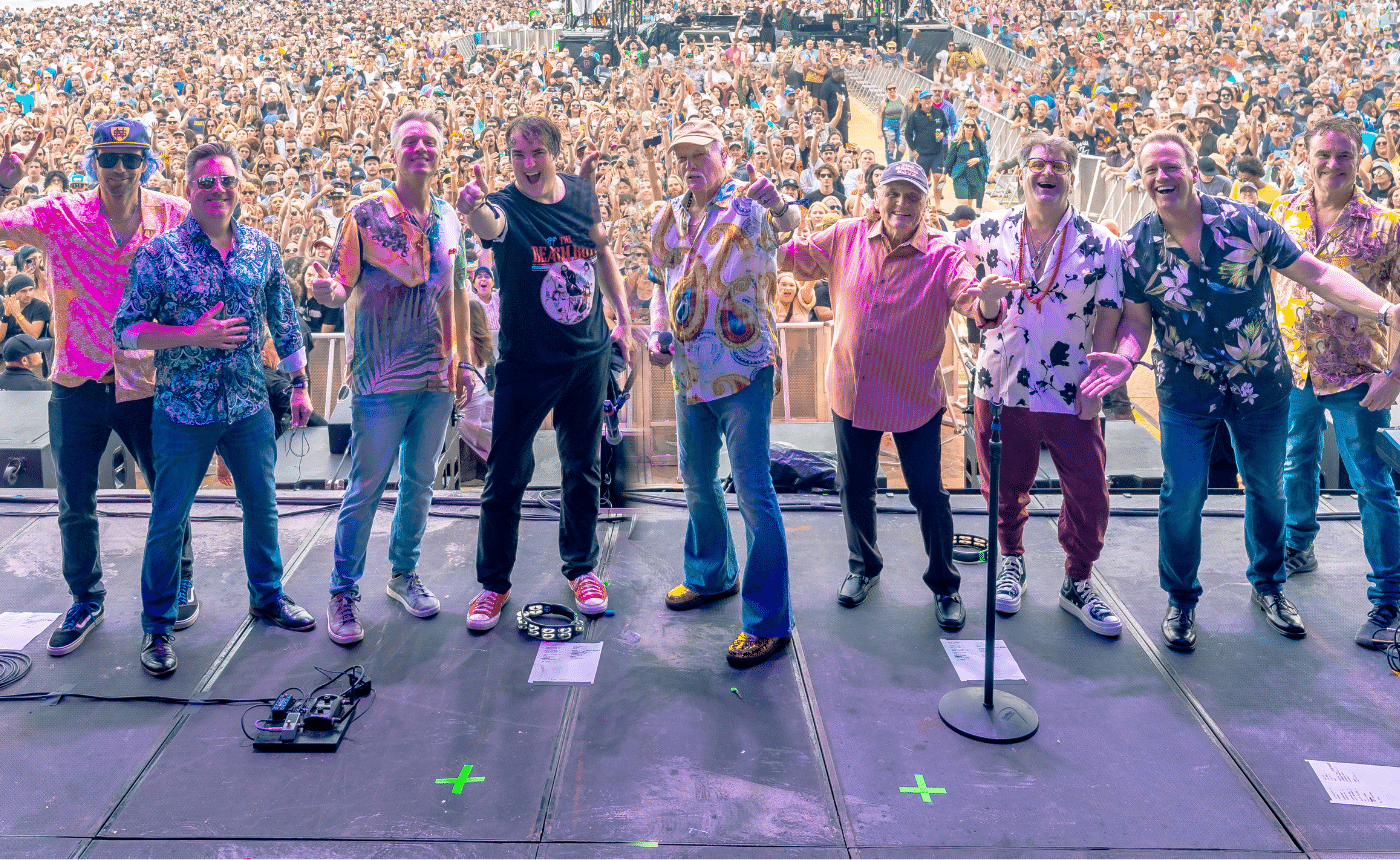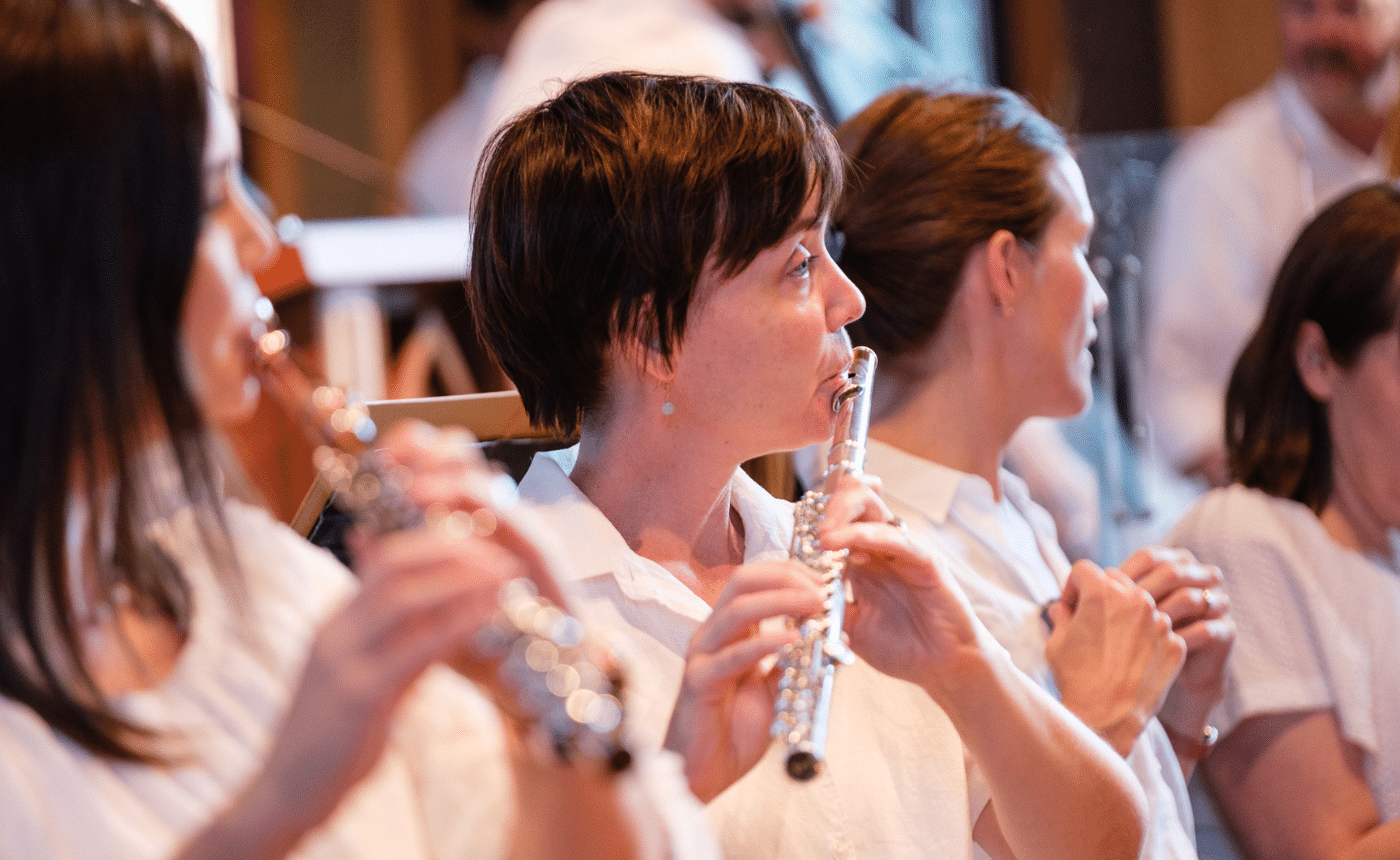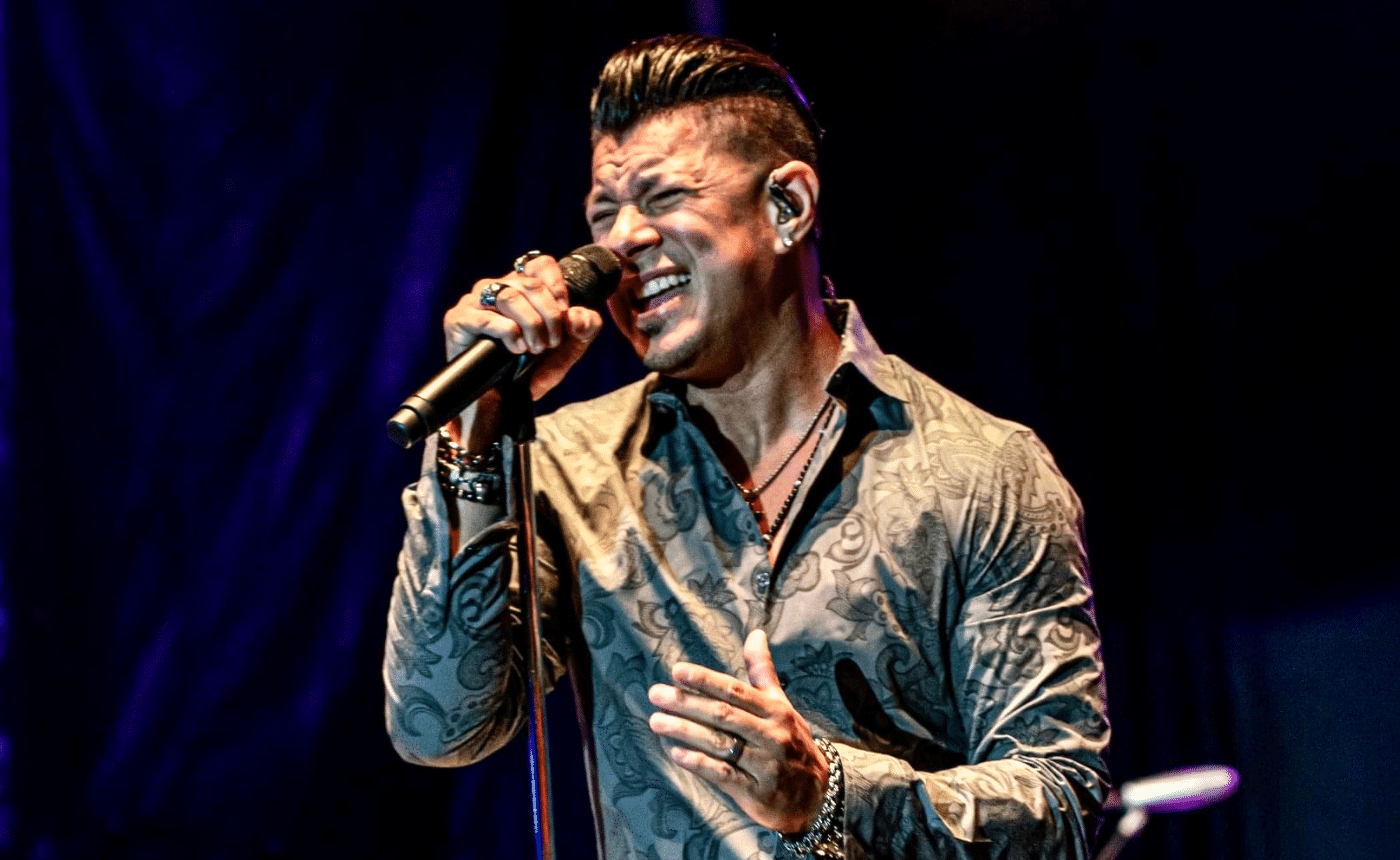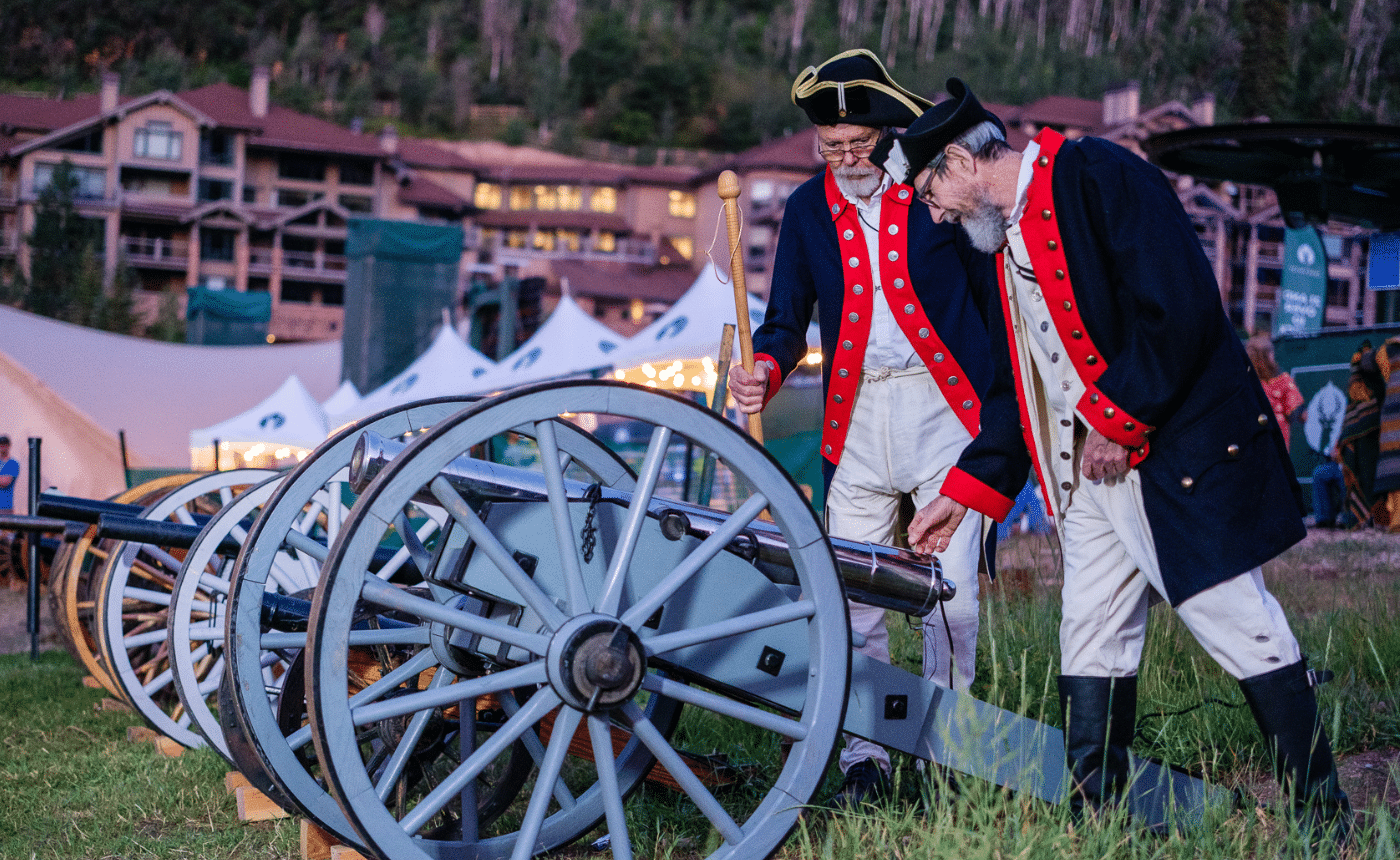Mahler Listening GuideSymphony no. 7 in E Minor / C Major
by Bettie Jo Basinger
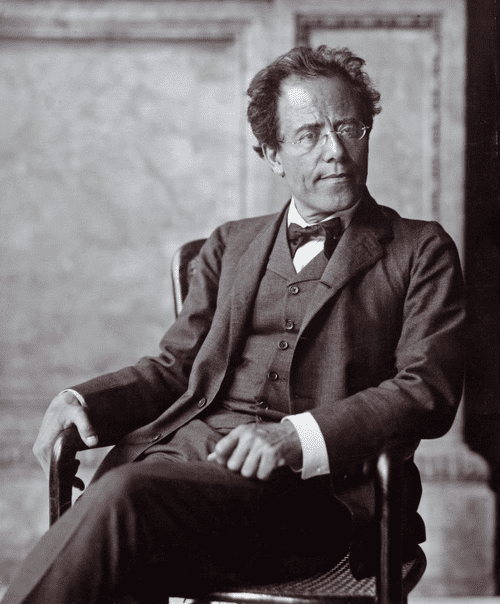
Gustav Mahler
During the summer of 1904, Mahler spent his usual “composing vacation” in Maiernigg on the shore of the Wörthersee with his wife Alma and two young daughters. These months proved particularly fruitful, seeing the completion of both Symphony no. 6 and the song cycle Kindertotenlieder (Songs on the Death of Children). The composer also penned two movements that he designated as “Nachtmusik” (“Night music”), and by the next year, Mahler had decided to incorporate them into another symphony.
Unfortunately, the 1905 summer holiday began with one of the worst periods of writer’s block that Mahler ever endured. After several weeks without progress, he sought inspiration in the Italian Dolomites. This offered no stimulation, but the return journey did revive the composer’s imagination. He described this rejuvenation in a 1910 letter to Alma as follows:
. . . I made up my mind to finish the Seventh, both Andantes of
which were there on my table. I plagued myself for two weeks
until I sank into gloom, as you well remember, until I ran off to
the Dolomites. There I was led the same dance, and at last gave
it up and returned home, convinced that the whole summer was
lost. You were not [there] to meet me because I had not let you
know the time of my arrival. I got into the boat to be rowed
across. At the first stroke of the oars, the theme (or rather the
rhythm and character) of the introduction to the first movement
came into my head—and in four weeks the first, third, and fifth
movements were finished.
Thus, Mahler had likely written the remainder of Symphony no. 7 by the middle of August. Over the course of the subsequent winter and spring, he added some final touches and made a clean copy of the score. Then he shelved the piece, and it sat unheard for two more years: The work did not premiere until 19 September 1908.
No symphony since the First experienced this much delay between composition and first performance. While Mahler’s Sixth Symphony did not premiere until 27 May 1906, this date roughly corresponds with the time the composer set aside the Seventh; performance of the former therefore does not account for postponement of a hearing of the latter. Instead, Mahler may have decided to hold back Symphony no. 7 because he recognized its unconventional musical style and content.
Alma’s 1940 memoirs make clear that her husband felt very nervous—to the point of making himself physically ill—prior to the symphony’s first hearing. Although the composer exhibited similar anxiety in connection with the premiere of Symphony no. 6, Alma’s recollections associate Mahler’s unease with the personal nature of the Sixth Symphony. In contrast, her memoirs reveal no autobiographical meaning embedded in the music of Symphony no. 7. Its absence consequently suggests that Mahler’s disquiet about his Seventh Symphony’s first performance either stemmed from the music itself, or his anticipation of how others would react to it:
The first performance of the Seventh Symphony took place in
Prague in September. Mahler went ahead . . . . There were many
of Mahler’s friends in Prague, Neisser, Berliner, Garilovitch, and
also several youthful musicians, Alban Berg, Bodanzky, Keussler,
Klemperer. They all helped him to revise the orchestration and
to copy the parts. Even at the final rehearsal, he was aware of
lack of balance and never ceased making alterations in the proofs
as long as any possibility of doing so remained. On all the various
occasions when his symphonies were performed for the first time,
younger musicians gathered around to give him their help, as they
did now.
I arrived in time for the last rehearsals, and as I was alone
he sent Berliner to meet me instead of coming himself, which very
much alarmed me. I found him in bed; he was nervous and unwell.
His room was littered with orchestral parts, for his alterations were
incessant in those days, not, of course, in the composition, but in the
instrumentation. From the Fifth onwards, he found it impossible to
satisfy himself. The Fifth was differently orchestrated for practically
every performance; the Sixth and Seventh were continually in the
process of revision. It was a phase. His self-assurance returned with
the Eighth . . . .
But now he was torn by doubts. He avoided the society of his
fellow musicians, which as a rule he eagerly sought, and went to bed
immediately after dinner so as to save his energy for the rehearsals. . . .
Mahler’s health and spirits improved as the rehearsals went on, and
his self-confidence rose.
The Seventh was scarcely understood by the public. It had
[only] a succès d’estime.
The Drei Zinnen (or, Tre Cime di Lavaredo) in the Dolomites,
a location Mahler visited during the summer of 1904
The critical success mentioned in the quotation above came from early twentieth-century “modernist” composers like Arnold Schoenberg and Anton Webern. These individuals perceived beauty and expert craftsmanship in Symphony no. 7—and by extension, Mahler’s oeuvre overall. Contemporary audiences, on the other hand, found the symphony’s juxtaposition of sharply contrasting moods and gestures incomprehensible. Even in the twenty-first century, scholars consider the work “controversial” (an expression used by several Mahler specialists), and analysts continue to debate the merits of the music, particularly the cheerful yet disjointed finale. Likewise, the seemingly disconnected nature of the Seventh Symphony still proves difficult for some of today’s listeners, especially since no program—even one withdrawn by the composer—exists to help shape interpretation. Alma succinctly summarizes this fact in her memoirs: “When [Mahler] wrote the serenade, he was beset by Eichendorff-ish visions—murmuring springs and German Romanticism. Apart from this, the symphony has no context.”
Yet even Joseph von Eichendorff (1788-1857)—a German poet and novelist whose verse Schumann, Mendelssohn, Brahms, and Hugo Wolf set as lieder —does not provide a concrete scenario for the movement mentioned by Alma. Because Eichendorff affixed the title “Ständchen” (“Serenade”) to multiple poems, as well as implanting other examples in his novels and novellas, no definitive model materializes as the basis for the Seventh Symphony. Moreover, Mahler gave his movements the title “Nachtmusik” rather than “Ständchen.” These three labels have different connotations, even though both could translate as “serenade.”
In German-speaking lands of the eighteenth century, the concept of a serenade did not exclusively equate to a man singing beneath the window of his beloved. The designation “die Serenade” (“the serenade”) could indicate an instrumental composition for small groups of winds and/or strings played outdoors around 9:00 pm. “Nachtmusik” (also assigned the Italian equivalent “Notturno”) closely resembled the Serenade genre, but differed because performance normally occurred around 11:00 pm. (Mozart remains the best-known composer of both of these types of pieces, with his Eine kleine Nachtmusik, K. 525 of 1787 serving as particularly famous example.) Only in the nineteenth century did composers regularly adopt the term “Ständchen,” applying it to songs, as well as choruses for male voices, with texts evoking traditional serenade imagery. Meanwhile, both the Serenade and Nachtmusik genres fell out of favor during the Romantic period.
By classifying the second and fourth movements of the Seventh Symphony as Nachtmusik, Mahler evokes a wider range of images than he would with the more common label (at least by nineteenth-century standards) Ständchen. His use of guitar and mandolin in the fourth movement still allow him to suggest a moonlit performance of a love song. Yet even this movement involves varying moods and gestures, much as Romanticism’s notion of night entwines it with sleep, calm, melancholy, and death. The diverse materials and affects of the two Nachtmusik movements—not to mention Symphony no. 7 as a whole—therefore better accord with a broader understanding of “night music.”
Take, for example, the Andante moderato second movement. Because the music presents a march as its primary material, the composer once likened the movement to Rembrandt’s De Nachtwacht (The Night Watch) of 1642. Nevertheless, the music also suggests birdcalls, several of Mahler’s earlier symphonies, and even Berlioz’s Symphonie fantastique of 1830. For this reason, interpreting the movement solely as a nighttime procession would dismiss much of its content.
Schutters van wijk II onder leiding van kapitein Frans Banninck Cocq
(Militia Company of District II under the Command of Captain Frans Banning Cocq)
[1642] by Rembrandt van Rijn (1606-1669)
Furthermore, the symphony’s finale has a greater resonance with the idea of night music than it has with a serenade. Mahler himself acknowledged this link when he described the fifth movement as “broad daylight” to William Ritter (1867-1955), a Swiss music critic with whom he was corresponding by 1901. If a finale expressing this sentiment follows two Nachtmusik movements, then the work progresses from night to day—in other words, from darkness to light. In this regard, Symphony no. 7 follows a trajectory Mahler often traces in his music. The Seventh Symphony dispels the gloom of the “tragic” Symphony no. 6 to parallel the optimistic affective journey taken in the First through Fifth Symphonies.
Approximate Time in Performance:
75-80 minutes
Instrumentation:
Piccolo
4 flutes, with 1 player alternating on piccolo
3 oboes
English horn
E-flat clarinet
3 clarinets
Bass clarinet
3 bassoons
Contrabassoon
Tenor horn
4 French horns
3 trumpets
Cornet
3 trombones
Tuba
Timpani
Side Drum
Bass drum
Cymbals
Triangle
Tambourine
Tam-tam
Cowbells
Whip
Deep bells
Glockenspiel
Guitar
Mandolin
2 Harps
Violins
Violas
Cellos
Basses
Listening Guide for the First Movement:
Like the openings of many of Mahler’s orchestral works, Symphony no. 7 commences with a slow introduction. This one establishes a solemn mood through the use of funeral-march rhythms and the unexpected timbre of a tenor horn—a German instrument closely related to the American baritone horn. The melody played by the tenor horn proves malleable: Mahler constantly varies its pitches and displaces its rhythms as he passes the material to other instruments. In this way, the composer prepares the principal theme of movement, which enters after the march-like character of the introduction intensifies and the speed accelerates.
A German tenor horn
The main body of movement follows a loose sonata-form design, which begins at an Allegro con fuoco (i.e., with fire) tempo. The exposition presents three primary ideas. First, the horns state a new tune—comprised of figures taken from the introduction—over a driving accompaniment in a minor key. Next, a switch to the major mode ushers in “espressivo” (“expressive”) violins playing sweeping gestures “mit großen Schwung” (“with great impetus”). Finally, brass and woodwinds enter to brilliantly affirm a major-key variant of the “fuoco” theme before the minor mode intrudes once more.
The return of the minor mode coincides with restatement of both the home key and the movement’s principal melody (i.e., the “fuoco” material). However, the music soon moves into other tonal areas and begins to freely combine themes in a manner consistent with a sonata-form development. Mahler works with ideas deriving from the introduction, the “fuoco” melody, and the “großen Schwung” theme while constantly modifying key, tempo, volume, and orchestral timbre. But suddenly the orchestra halts, and a trumpet fanfare quietly announces a chorale.
This brief hymn recalls the Knaben Wunderhorn (The Boy’s Magic Horn) poem “Urlicht” that Mahler set in his Second Symphony. Nothing in the Seventh’s first movement has prepared the listener for the hymn’s serene affect, and—perhaps for this reason—its calm proves short-lived. It soon cedes to a pastoral section for double reeds and solo violin. Yet following this interlude, trumpet fanfares signal a reappearance of the chorale, and this time, its “Urlicht” recollections lead to a lush climax. Here the violins intone the “großen Schwung” melody above harp arpeggios while the brass quietly sounds the “fuoco” theme in the background. Gradually the level of dissonance increases as the volume builds; ultimately, the music peaks, and Mahler then reprises the movement’s introduction.
A sonata-form recapitulation normally does not incorporate the return of an introduction (though exceptions to this rule extend at least as far back as Beethoven, with the first movement of the Piano Sonata in C minor, Op. 13 “Pathètique” of 1798 serving a clear example). Mahler’s varied restatement nonetheless provides a necessary bridge between the development and the reappearance of his primary theme. The introduction’s material reestablish the somber mood that prevailed at the beginning of the movement, and this supplies a better launching point for the “fuoco” start of the recapitulation than would the idyllic atmosphere heard at the movement’s apex.
As in the exposition, the fiery temperament of the main melody dissipates for the “großen Schwung” material. This soon gives way to a march-like version of the primary theme, which quickly becomes militaristic as the music surges towards its coda. This final section begins with another martial push, but dramatic arpeggios (briefly in tonic major) soon bring the movement to a close.
Listening Guide for the Second Movement:
An Allegro moderato comprises the Seventh Symphony’s first Nachtmusik movement. It begins with a French horn duet alternating in a call and answer arrangement, and Mahler instructs the responding horn use a mute. This scoring evokes the pairing of English horn and offstage oboe in the “Scène aux champs” (“Scene in the Fields,” or “Scene in the Country”) of Berlioz’s Symphonie fantastique, especially since the oboe and English horn timbres clearly emerge in the ensuing interplay between the various woodwind instruments.
But Mahler did not incorporate this reference to Symphony fantastique as a mere homage. In the program for “Scène aux champs,” the protagonist muses about his beloved while listening to shepherds piping in the countryside. Thus, Berlioz’s movement unfolds, at least within the world of its program, in nature. Mahler also desires an outdoor setting for the Allegro moderato of Symphony no. 7, since this would link the movement to the eighteenth-century tradition of Nachtmusik. By alluding to the music of “Scène aux champs”¬—and by extension, its program—Mahler can place his second movement in the same environment.
The materials mentioned thus far belong to the Allegro moderato’s introduction, and the aforementioned woodwinds coalesce into birdsong. (Mahler will mark these materials “wie Vogelstimmen”—”like birdcalls”— in the movement’s coda.) Light articulation and trills permeate their lines, though the texture thickens as more instruments join in. However, the major-minor motto of the Sixth Symphony soon interrupts in order to signal the start of the movement proper.
Overall, the Allegro moderato proceeds as a march that flanks two contrasting trios. The primary melody derives from the horn dialogue that opened the movement, and initially, its character manifests only when rhythmic accompaniment (played “col legno”—”with the wood” of the bow— by the violins) intermittently appears. The processional qualities of the music nevertheless intensify, even as hints of the birdsong periodically surface. For this reason, the movement’s identity as a march becomes unmistakable by the time the first trio arrives.
Although this trio retains the march’s tempo and meter, it possesses a contrasting disposition; so too does the second trio. In the former, the broad melodic lines of the cellos resemble the popular music of Mahler’s day, while the accompanying triplets impart a dance feel. The latter, on the other hand, conveys a pastoral lyricism through the prevalence of woodwind timbres, frequent trills, and drone harmonies. The composer further distinguishes the trios from the march through occasional recollections of his First and Third Symphonies; in contrast, the march does not recall any other works, whether by Mahler himself or a different composer.
Restatement of the march—preceded by the introduction’s horn duet, this time with offstage cowbells—separates the first trio from the second, and varied presentation of the birdsong (culminating with the major-minor motto of the Sixth Symphony) bisects the latter. Then the sections heard up to this point in the Allegro moderato return in reverse order: The second trio moves to the march, which then cedes to a reappearance of the first trio. This, in turn, leads to the final hearing of the march. Finally, the materials of introduction resurface in a coda that culminates in the major-minor motto before the music fades out.
Listening Guide for the Third Movement:
Although Mahler did not designate the third movement as Nachtmusik, the “schattenhaft” (“shadowy”) indication he affixed to the score suggests that this scherzo has a nocturnal disposition. The composer evokes this character through muted strings and glissandi, as well as through the “klagend” (“lamenting” or “wailing”) melody replete with sighing figures. Yet this atmosphere does not persist for the entire movement. Like the rest of the Seventh Symphony, the scherzo incorporates a considerable amount of contrast.
The movement subdivides into the typical tripartite layout expected of scherzos, with variety attained by means of a trio sandwiched between two statements of the primary material. However, Mahler creates even greater diversity with a playful waltz that appears within both scherzo sections. Initiated by a sweeping leap in the violins, the graceful melodic line and um-pah-pah rhythms of this dance offer temporary respite, though the scherzo’s shadowy mischief always returns.
Even the trio section cannot escape the movement’s devilry. It begins with a “dolce espressivo” (“sweet,” “expressive”) oboe duet set against drone harmonies, but swirling figuration in the flutes and solo violin soon disrupt this pastoral calm. A solo viola then strikes up another dance, made somber by the thin orchestration and descending melodic line. As more instruments join the cotillion, the speed increases, and the music becomes distorted until a lyrical theme in the horns and cellos somehow emerges from the din.
The scherzo nevertheless resurfaces, cutting off this lyricism. At first, the final presentation of its materials proceeds as before: Mahler establishes the dark atmosphere, the “klagend” idea recurs (now in the violins), and then the waltz arrives—as do the trio’s motives. In other words, the composer synthesizes all of his melodies, rather than simply restating the waltz. This results in an animated feel, yet because he parodies many of his themes, Mahler simultaneously caricatures his own music. The movement consequently ends with its mischievous nature intact.
Listening Guide for the Fourth Movement:
In correspondence dating as early as 1904, Mahler refers to the Seventh Symphony’s fourth movement as a serenade (as opposed to the Nachtmusik designation that appears on the score). This appellation acknowledges the movement’s plucked accompaniment alternately played by harps, strings, guitar and mandolin. Likewise, it embraces the Andante amoroso (“loving” or “affectionate”) tempo indication, which combines with the aforementioned instruments to suggest a lover accompanying himself while he sings beneath the stars. Mahler also may have modeled the movement on Wagner’s Siegfried Idyll of 1870, a serenade performed at the Wagner home for the composer’s wife on the occasion of her 33rd birthday.
The form of this serenade resembles the preceding scherzo: two presentations of the main melody surround a central trio. However, in this movement Mahler inserts a developmental restatement of the primary theme between its first hearing and the trio. Furthermore, the trio materials do not interpenetrate the final appearance of the serenade as they did in the last scherzo segment. The resultant form, then, reduces to AA’BA (or, serenade – development of serenade – trio – serenade).
In the opening bars of the movement, the violins perform an “espressivo” motive, “mit Aufschwung” (“with upswing”), that will return several times in the serenade sections as a closing gesture. A “zart hervortretend” (“gently prominent”) horn melody, placed above plucked lines in the harp, soon follows. It too recurs in a manner resembling a refrain fashion, always set against bird-like gestures in the woodwinds that recall the earlier Nachtmusik movement. Between these ideas, the violins present short lyrical and “graziosissimo” (“the most graceful”) interludes.
Repeated low notes mark the beginning of the developmental portion of the fourth movement. In this section, Mahler fragments and manipulates both the “zart” and “graziosissimo” materials. The mandolin timbre periodically surfaces, and the music begins to modulate, taking the movement into minor keys. This creates tension, as do the low register and occasional changes in tempo.
The trio commences with a broad, descending theme played by solo horn and cello. This songlike melody appears twice, with its second statement rising to a peak. Harp arpeggios sound as the gesture subsides, and in the quiet that ensues, fragments in the oboe and horn suggest that the trio’s descending theme will repeat once more. Instead, the violins enter “mit Aufschwung,” reiterating the opening of the movement.
This, in turn, indicates the reprise of the serenade. All of its materials now come back in varied guises. Yet this time the “graziosissimo” melody rises to a dramatic fortissimo that briefly evokes the Adagietto of Mahler’s Fifth Symphony. Similarly, the subsequent passages—marked “etwas dränged” (“somewhat urgent”), “aufgeregt” (“excited” or “agitated”), and “sehr fließend” (“very flowing”)—accelerate, building as if the movement is hastening towards its climax. Nevertheless, the original tempo abruptly returns, as does the initial mood. These persist until the serenade dissipates, leaving only the birdcalls and plucked chords to quietly end the movement.
Listening Guide for the Fifth Movement:
Mahler identifies the last movement of Symphony no. 7 as a “Rondo-Finale.” This implies that its main theme will frequently return in the home key. However, this designation neither acknowledges the complexities of the movement’s form, nor indicates the unexpected ways in which the composer manipulates the rondo’s primary materials. For example, the movement’s main themes do alternate with secondary sections in the manner of a rondo. But Mahler weaves in developmental statements of his principal motives, and his development subjects these ideas to disruptive changes in tempo and meter that seem atypical of rondo form.
At the beginning of the finale, the composer establishes a pattern of stating the so-called “refrain” (i.e., the main portion of a rondo form), moving to a contrasting “episode,” and then presenting a variation of the refrain. In theory, three of these sequences occur; two further hearings of the refrain then follow before a coda concludes the movement. A summary of this scheme would appear as ABA’ ABA’ ABA’ AA coda (A = refrain; B = episode; A’ = development of the refrain).
Unfortunately, this tidy scheme does not hold up in practice. By the third occurence of the movement’s refrain, Mahler no longer remains in the home key for the entire presentation of its materials. Yet in traditional rondo form, a refrain must remain in tonic; if it does not, then the passage does not constitute a true refrain. Thus, an analyst could also interpret this finale as ABA’ ABA’ A’BA’A’ A’ coda.
After a brief but bombastic introduction, the initial refrain includes three motives, as well as a culminating fanfare, that will dominate the remainder of the movement. First, the trumpets sound a brilliant chorale in broad rhythms. Next, the French horns continue the hymn with an allusion to the overture from Wagner’s Die Meistersinger von Nürnberg (1867), and Mahler will employ this material as an independent idea as the movement proceeds. Finally, the violins in their low register emerge with an animated yet stately version of the chorale. This, in turn, leads to the aforementioned fanfares, which derive from the introduction’s timpani line.
An oboe duet now introduces a new melody, thereby delineating the rondo’s first episode. Here Mahler creates a pastoral atmosphere, and he evokes the bucolic scene with the same devices he used in the pastoral moments of the previous movements: wind duets, woodwind trills, and static harmonies. The oboe motive repeats and expands into a fuller theme. It weaves throughout the orchestral fabric, quickly gaining intensity. The growth proves fleeting, however, and it promptly cedes to the Meistersinger paraphrase.
Although the composer places the Meistersinger motive in the home key, he soon moves into foreign tonal regions. Once there, Mahler begins to treat his melodic materials with tremendous freedom. For example, he activates the rhythm of the stately variant of the chorale while scoring it for strings, woodwinds, and timpani in a decidedly eighteenth-century manner. This transformation later adopts a triple meter and a “grazioso” (“graceful”) affect, as well as a novel—though related—countermelody.
A short “pesante” (“heavy” or “ponderous”) phrase nevertheless dispels the lightness of the previous passages, preparing the listener for the return of the refrain. The composer wends through all of its motives with only slight alteration. In contrast, the second episode undergoes much greater modification. Set in the minor mode, the oboe melody transfers to the darker-sounding English horn, and a Rute (i.e., twig or switch) strikes the side of the bass drum to provide accompaniment. Exaggerated accents and abrupt changes in dynamics briefly distort the music before Mahler finally restores the pastoral calm of the first episode.
A sudden reduction of the orchestral forces marks off the next section of the movement. Here the strings play a fragment of the episode, and the brass answers with the Meistersinger material in a distant tonal area. Mahler immediately corrects this “mistake,” and after a short pause, reintroduces the eighteenth-century version of the chorale. Once again, the composer imposes a triple meter and “grazioso” character on this melody as he channels it through a variety of keys. But this time, Mahler inserts a short phrase in a fast tempo to temporarily disrupt the progress of the theme.
Likewise, another unanticipated switch to a fast tempo prevents the “grazioso” transformation from attaining closure. This interruption ushers in an alternation of expansive chords and running figuration in the strings that reestablishes the home key. A greatly modified and compressed refrain ensues, with the stately violin material resurfacing only in its eighteenth-century guise. When the original form of this melody finally emerges, Mahler has moved into a new key. He now develops the theme by setting it against other motives, including the chorale and timpani line that opened the movement.
This developmental treatment of refrain materials quickly yields to the final episode. Despite a few hints of darkness, as well as the uniqueness of flutter-tonguing flutes (i.e., rolling the letter r while still blowing into a wind instrument), this segment of the movement possesses the pastoral qualities of its predecessors. Mahler’s subsequent handling of refrain motives, on the other hand, greatly diverges in the remainder of the movement. In addition to incorporating a near quotation of Janissary music* from Mozart’s 1782 opera Die Entführung aus Serail [The Abduction from the Seraglio], K. 384—a work that a features an onstage serenade sung to plucked string accompaniment—the composer entwines all of the finale’s melodies, as well as recalling the first movement’s main theme. The tempo changes no fewer than nine times, and the meter also fluctuates. Brass timbres predominate, and as the final moments of the piece approach, bells resound to bring Symphony no. 7 to a luminous conclusion.
*Music purporting to emulate military bands that accompanied the Janissaries, elite soldiers of the Ottoman Empire.
About the Author
Bettie Jo Basinger has been teaching at the University of Utah since 2007. She has both a Master’s Degree and PhD in Musicology—as well as a Bachelor’s in French Horn Performance—from UCLA. Although her research interests include the entire symphonic repertoire, Dr. Basinger specializes in the orchestral program music of the nineteenth century, particularly the symphonic poems of Franz Liszt.









